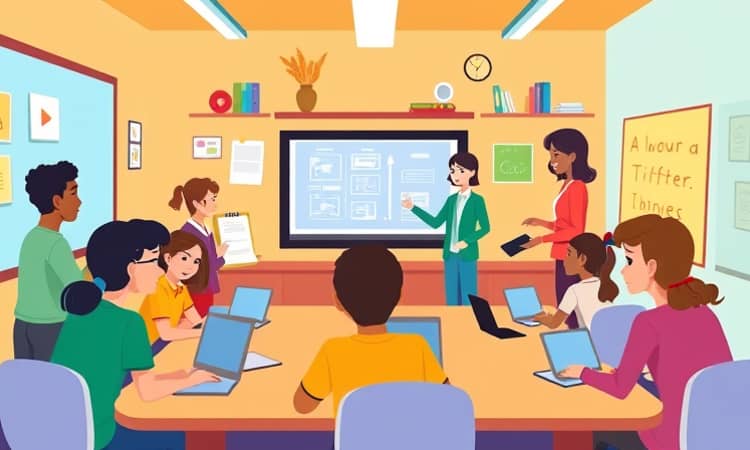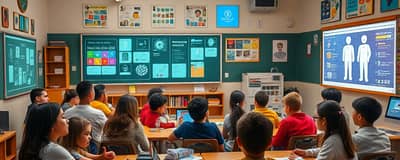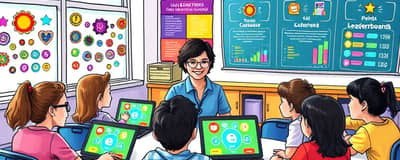As remote learning continues to expand its reach, educators face unique challenges in maintaining engagement, structure, and community. With consistent structure and timely feedback, teachers can create an environment where every student thrives, no matter where they are located.
Understanding the Remote Learning Landscape
Over the past decade, distance education has grown exponentially. Today, 53% of U.S. public school districts have high school students enrolled in online courses, underscoring the importance of effective virtual classroom management.
Educators must balance flexible delivery with robust oversight to ensure that students remain on task, feel connected, and achieve academic success in digital settings.
Establishing Clear Rules and Expectations
One of the first steps in remote classroom management is to define behavioral norms. Without a physical presence, students need transparent guidelines to navigate online interactions.
Begin by creating explicit guidelines for online behavior. Collaborate with students to develop a group contract that outlines participation standards, etiquette in chat and video sessions, and consequences for off-task behavior.
By involving learners in the rule-making process, you foster ownership and accountability, reducing disruptions and promoting respectful interactions.
Building Community and Fostering Relationships
In a virtual setting, personal connection drives motivation. Without face-to-face contact, students can feel isolated or disengaged.
Incorporate icebreakers at the start of each term—ask students to share personal anecdotes or hobbies. Use small-group breakout sessions for team-building exercises that cultivate trust and collaboration.
Maintain a safe and inclusive learning environment by encouraging open dialogue, celebrating diverse perspectives, and providing channels for anonymous feedback to ensure every voice is heard.
Engaging Students with Interactive Technology
Technology should be more than a delivery mechanism; it must drive active learning. Integrate tools that spark curiosity and maintain attention throughout each lesson.
- Virtual whiteboards for collaborative note-taking and problem-solving activities
- Polling and quiz platforms to gauge understanding in real time
- Breakout rooms for peer discussions and small-group projects
- Gamified modules to reinforce concepts through competition and rewards
Rotate between video lectures, live chat Q&A, and interactive simulations to cater to different learning styles and prevent screen fatigue.
Organizing and Structuring Virtual Lessons
Clear organization reduces confusion and keeps students focused. Share detailed agendas and lesson plans before each session so learners know what to expect.
Set regular routines for check-ins, transitions between activities, and breaks. An organized digital classroom spaces model can include separate channels or tabs for assignments, general discussion, and instructor office hours.
Label resources clearly and archive past materials for easy reference, enabling students to revisit content independently.
Leveraging Data Analytics and Monitoring Tools
Data-driven insights empower teachers to identify disengaged learners early and tailor interventions.
Use classroom management software to view student screens, push resources directly to devices, and restrict access to non-educational sites during lessons. Integrate analytics dashboards to track:
By applying real-time monitoring and feedback loops, educators can intervene promptly and guide students back on track.
Maintaining Communication and Teacher Presence
Teacher visibility is crucial in remote settings. An active presence builds trust and keeps students engaged.
Schedule regular video check-ins, record short feedback videos, and post weekly announcements summarizing progress and upcoming goals. Encourage questions through chat and discussion boards, ensuring every student has a voice.
Develop a rhythm of prompt, personalized responses to assignments and inquiries, reinforcing that you are approachable and invested in their success.
Cultivating Professional Growth and Equity
Effective remote instruction requires ongoing learning and an equity lens. Offer professional development on new platforms, classroom management techniques, and inclusive practices.
- Solicit student feedback on lesson formats and adjust approaches accordingly
- Provide multiple assignment formats to accommodate varied learning preferences
- Address technology gaps by offering alternative access options or flexible deadlines
- Develop an FAQ repository so learners can find answers without delay
Prioritize fair access and accommodations for all by considering time zones, device availability, and individual support needs during lesson planning.
Measuring Success: Metrics and Outcomes
To gauge the effectiveness of your remote classroom strategies, track key indicators over time and adjust your approach based on data and feedback.
- Engagement rates: attendance, participation in polls, and discussion posts
- Time on task: average duration spent on activities and assignments
- Intervention frequency: number of off-task flags and support sessions
- Completion rates: percentage of submitted assignments on time
- Satisfaction scores: anonymous student and teacher surveys
By continuously refining your methods with data insights, you can foster data-driven early interventions and support that boost student achievement and well-being.
Remote classroom management is an evolving art that blends technology, pedagogy, and compassion. With clear expectations, community-building, interactive tools, structured routines, data analytics, and a commitment to equity, educators can create vibrant virtual learning experiences that rival traditional classrooms. As we navigate the future of education, these techniques will empower teachers to inspire, engage, and support every learner, no matter where they log in from.
References
- https://www.bcc.cuny.edu/academics/ctlt/classroom-management-techniques-and-tips/
- https://www.educate-me.co/blog/online-class-management
- https://www.edutopia.org/article/extending-classroom-management-online/
- https://www.class.com/blog/5-remote-classroom-management-tips-for-2021/
- https://managedmethods.com/blog/online-classroom-management/
- https://www.securly.com/classroom
- https://www.prodigygame.com/main-en/blog/classroom-management-strategies/
- https://www.literacymn.org/five-strategies-for-behavior-management-in-virtual-classroom














